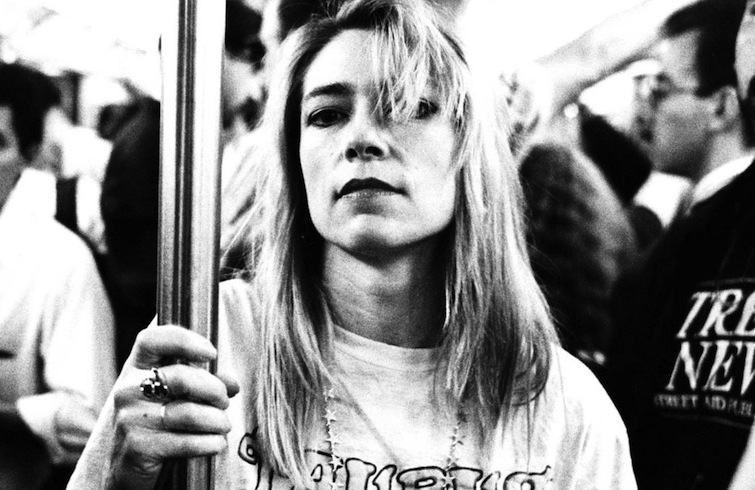At Public Books, Ivan Kreilkamp reads four recent memoirs by female punk icons Viv Albertine, Chrissie Hynde, Kim Gordon, and Carrie Brownstein which touch on, among other things, the challenges of being a woman in the male-dominated punk world. While the authors describe a subculture of routine harassment and insults, they also celebrate the gender and sexual liberation they found through punk music. Here’s a snippet of Kreilkamp’s review:
As Jon Savage outlines in his invaluable history England’s Dreaming, in its early phase, English punk was a radical sex and gender project. The Sex Pistols began life as a promotional extension of Vivienne Westwood and Malcolm McLaren’s King’s Road fetish-and-bondage boutique, Sex. In this initial phase, punk was more visibly a sexually non-conformist fashion subculture than a musical one. One participant observes, “People think that the early days of Punk were all banging along at Sex Pistols gigs. … But for me it was camping it up down Park Lane … All these queens going around in Punk gear and black leather going, ‘Ooooooh!’” For Savage, “the first Sex Pistol” was not a member of the band, but rather a now-forgotten member of the Sex collective who in punk’s early days had turned herself into a “living advertisement” for the shop’s aesthetics: Jordan, neé Pamela Rooke. “I liked to treat myself like a painting,” Jordan says, explaining that she came up with her fetish-wear look as a way to get into a gay club, the Masquerade: “Sometimes I’d get on a train and all I had on was a stocking and suspenders and a rubber top, that was it.”
Viv Albertine and Chrissie Hynde could be understood as having been two of Vivienne Westwood’s punk daughters—allied in common cause with, but often overshadowed by, Malcolm McLaren’s punk sons. They have both recently published memoirs offering overlapping accounts of their experiences in the London birth of punk; other recent memoirs, by Patti Smith, Kim Gordon, and Carrie Brownstein, tell their own stories of a female experience of American punk and post-punk. Although these women position themselves in very different ways in relation to the movement and the music, their life narratives reveal the possibility of a punk history centered less around the familiar iconography of Johnny Rotten (John Lydon), Sid Vicious, and Joe Strummer, and more around female performers’ bodies …
For Albertine, punk always seems to have been less exclusively a matter of music per se than a broader stage for a radically honest performance of self: an art project in which the most repressed, putatively shameful personal and cultural material, especially that related to female experience, could be turned inside out and transformed through public visibility. She describes the transformative effect Patti Smith’s debut album, Horses (and, crucially, its Robert Mapplethorpe cover photo of Smith), had on her in 1975:
I have never seen a girl who looks like this. She is my soul made visible, all the things I hide deep inside myself that can’t come out. … She’s a private person who dares to let go in front of everyone, puts herself out there and risks falling flat on her face. Up until now girls have been so controlled and restrained. Patti Smith is abandoned. Her record translates into sound, parts of myself that I could not access, could not verbalise, could not visualise, until this moment.
Image: Kim Gordon
